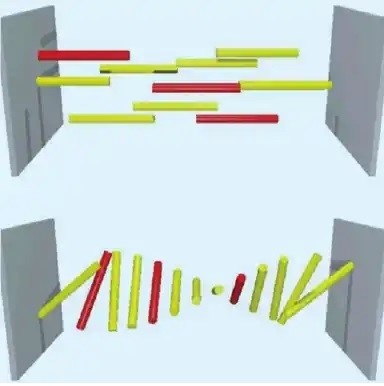
The graphic illustrates how reorienting liquid crystal (yellow) causes dichroic dye (red) to reorient along with it, which changes the transmission of light. In 1997, the U.S. Department of the Air Force identified a need for controlling visor tint in pilot eyewear. Visor tint was affected by light transmission when pilots would go above or below the clouds, as sudden washes of intense sunlight mid-flight impacted their ability to read and track the data on their aircraft-mounted and head-mounted displays. To address this safety issue, AFRL partnered with Kent State University-based AlphaMicron Inc., or AMI, a global leader in liquid crystal technology, to find a solution based on AMI’s proprietary polarizer-free, guest-host liquid crystal system known as e-Tint. AMI’s Chief Technology Officer and Chief Executive Officer Dr. Bahman Taheri likens this system to a molecular version of a Venetian blind. (Courtesy photo / AlphaMicron Inc.)
| Date Taken: | 04.13.2023 |
| Date Posted: | 04.24.2023 10:48 |
| Photo ID: | 7757429 |
| VIRIN: | 230413-F-JC276-0032 |
| Resolution: | 384x386 |
| Size: | 45.77 KB |
| Location: | WRIGHT-PATTERSON AIR FORCE BASE, OHIO, US |
| Web Views: | 10 |
| Downloads: | 2 |

This work, AFRL re-ups affiliation with longtime liquid crystal industry partner to meet DOD needs [Image 2 of 2], by Gail L Forbes, identified by DVIDS, must comply with the restrictions shown on https://www.dvidshub.net/about/copyright.